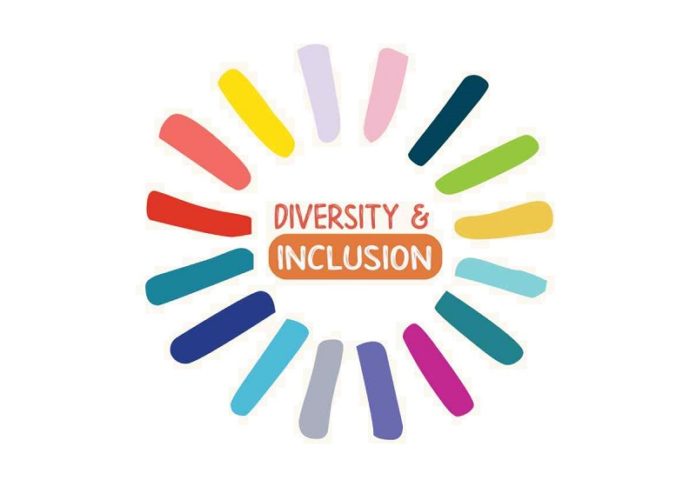Diversity and inclusion: Hopefully, at your company, they’re more than buzzwords to toss around just a few times a year. Instead, they’re two principles to build into your business from the ground up.
By Kylie McQuarrie
Not sure where to start? Ask the experts. The three major companies we talk about below get diversity and inclusion right—which means their actions offer some excellent models for companies looking to improve their own focus on diversity and inclusion.
Keep reading for cues to creating a work environment where everyone feels welcome.
1. Gap Inc.
Gap Inc. is the parent company of clothing brands like Athleta, Old Navy, and Banana Republic (and, of course, Gap). Its diversity and inclusion model consistently wins international recognition, including in the Thomson Reuters Global Diversity and Inclusion Index, where Gap Inc. took fifth out of 7,000 companies reviewed worldwide in 2018.
What makes Gap Inc. stand out? For one thing, the company has its own diversity and inclusion training curriculum and provides unconscious bias training, not just on a one-time basis (looking at you, Starbucks) but as an in-depth, ongoing company conversation.
Gap Inc. also has several internal groups that help determine how to best use the company’s financial and human resources to support inclusion and diversity.
For instance, its Diversity + Inclusion Council “[influences] organizational change by serving as an advisory board, helping the business and decision makers understand the complexities and nuances of the work and the benefits of successful integration.”
In other words, instead of implementing top-down decisions based on what higher-ups think will foster diversity, Gap Inc. listens to expert employee voices within the community—and actually gives them the time, materials, and company resources to promote real change.
2. Procter & Gamble
“Pinkwashing,” or “rainbow capitalism,” is a derogatory term that refers to companies that use LGBTQ-friendly messaging to sell products without actively supporting LGBTQ rights or communities in any meaningful way.
Instead of pinkwashing, Procter & Gamble (P&G)—the parent company of dozens of brands, from Tide to Pampers to Old Spice—works hard to put its money where its mouth is by amplifying LGBTQ voices within the company.
In June 2019, P&G partnered with CNN to produce a documentary called Out of the Shadows. The half-hour film centered on LGBTQ P&G employees who fought homophobia decades ago both within the company and in the wider culture. The film was part of a display in New York City called “Queer City,” which commemorated Stonewall by showcasing artifacts from the time period and immersing visitors in a “day-in-the-life” interactive exhibit.
P&G also sponsors several employee affinity groups, some of which—like the Gay, Ally, Bisexual, Lesbian, and Transgender Employees (GABLE) group—started out as grassroots company organizations that raised their voices to demand change . . . and the company listened. Now, P&G affinity groups have the company resources to host events like the 2018 P&G Latin America GABLE Conference, which aimed to “bring awareness and consciousness of LGBT+ and diversity matters with a lens on business impact.”
3. L’Oréal
L’Oréal has a fairly robust diversity and inclusion section on its website—but then, so do a lot of companies, so what really makes L’Oréal stand out?
Most importantly, the company provides clear facts and figures and transparent, concrete statements that show where L’Oréal is now and how it plans to improve.
For instance, the company states that it is “endeavoring to attract greater numbers of differently-abled people. Keeping in mind that 71% of disabilities are invisible, our offices around the world are instituting awareness programs to ensure that our workplaces are welcoming to disabled people and adapted to their needs.”
The company clearly outlines a goal, demonstrates an awareness of challenges currently facing a group, and gives a concrete example of how the company plans to achieve that goal. In other words, L’Oréal steers clear of hollow platitudes about wanting to improve diversity; instead, it shows employees and stakeholders alike what the company wants to change and how it intends to do so.
What about your company?
So how can you foster a similarly diverse, inclusive culture at your small business?
Like Gap Inc., you can make diversity and inclusion an essential part of your company, not a one-time mandatory HR training. Like Procter and Gamble, you can listen to voices agitating for change within your company, and then give grassroots organizations the time, money, and resources to flourish. And like L’Oréal, you can be transparent with employees and stakeholders, giving them clear, concrete information about how you plan to improve.
Kylie McQuarrie has five years of experience writing for and about small businesses, most recently on Business.org. When not writing, she reads voraciously, acts as a sofa for her chaotic cat, and meticulously curates Apple Music playlists.
Diversity and inclusion stock photo by Iheartwordart/Shutterstock







